-
BackX
-
Components
-
-
Category
-
Semiconductors
- Diodes
- Thyristors
-
Electro-insulated Modules
- Electro-insulated Modules | VISHAY (IR)
- Electro-insulated Modules | INFINEON (EUPEC)
- Electro-insulated Modules | Semikron
- Electro-insulated Modules | POWEREX
- Electro-insulated Modules | IXYS
- Electro-insulated Modules | POSEICO
- Electro-insulated Modules | ABB
- Electro-insulated Modules | TECHSEM
- Go to the subcategory
- Bridge Rectifiers
-
Transistors
- Transistors | GeneSiC
- SiC MOSFET Modules | Mitsubishi
- SiC MOSFET Modules | STARPOWER
- Module SiC MOSFET ABB’s
- IGBT Modules | MITSUBISHI
- Transistor Modules | MITSUBISHI
- MOSFET Modules | MITSUBISHI
- Transistor Modules | ABB
- IGBT Modules | POWEREX
- IGBT Modules | INFINEON (EUPEC)
- Silicon Carbide (SiC) semiconductor elements
- Go to the subcategory
- Gate Drivers
- Power Blocks
- Go to the subcategory
- Electrical Transducers
-
Passive components (capacitors, resistors, fuses, filters)
- Resistors
-
Fuses
- Miniature Fuses for electronic circuits - ABC & AGC Series
- Tubular Fast-acting Fuses
- Time-delay Fuse Links with GL/GG & AM characteristics
- Ultrafast Fuse Links
- Fast-acting Fuses (British & American standard)
- Fast-acting Fuses (European standard)
- Traction Fuses
- High-voltage Fuse Links
- Go to the subcategory
- Capacitors
- EMI Filters
- Supercapacitors
- Power surge protection
- TEMPEST emission revealing filters
- Go to the subcategory
-
Relays and Contactors
- Relays and Contactors - Theory
- 3-Phase AC Semiconductor Relays
- DC Semiconductor Relays
- Controllers, Control Systems and Accessories
- Soft Starters and Reversible Relays
- Electromechanical Relays
- Contactors
- Rotary Switches
-
Single-Phase AC Semiconductor Relays
- AC ONE PHASE RELAYS 1 series| D2425 | D2450
- One phase semiconductor AC relays CWA and CWD series
- One phase semiconductor AC relays CMRA and CMRD series
- One phase semiconductor AC relays - PS series
- Double and quadruple semiconductor AC relays - D24 D, TD24 Q, H12D48 D series
- One phase semiconductor relays - gn series
- Ckr series single phase solid state relays
- One phase AC semiconductor relays for DIN bus - ERDA I ERAA series
- 150A AC single phase relays
- Rail Mountable Solid State Relays With Integrated Heat Sink - ENDA, ERDA1 / ERAA1 series
- Go to the subcategory
- Single-Phase AC Semiconductor Relays for PCBs
- Interface Relays
- Go to the subcategory
- Cores and Other Inductive Components
- Heatsinks, Varistors, Thermal Protection
- Fans
- Air Conditioning, Accessories for Electrical Cabinets, Coolers
-
Batteries, Chargers, Buffer Power Supplies and Inverters
- Batteries, Chargers - Theoretical Description
- Modular Li-ion Battery Building Blocks, Custom Batteries, BMS
- Batteries
- Battery Chargers and Accessories
- Uninterruptible Power Supply and Buffer Power Supplies
- Inverters and Photovoltaic Equipments
- Energy storage
- Fuel cells
- Lithium-ion batteries
- Go to the subcategory
-
Automatics
- Spiralift Lifts
- Futaba Drone Parts
- Limit Switches, Microswitches
- Sensors, Transducers
-
Infrared Thermometers (Pyrometers)
- IR-TE Series - Water-proof Palm-sized Radiation Thermometer
- IR-TA Series - Handheld Type Radiation Thermometer
- IR-H Series - Handheld Type Radiation Thermometer
- IR-BA Series - High-speed Compact Radiation Thermometer
- IR-FA Series - Fiber Optic Radiation Thermometer
- IR-BZ Series - Compact Infrared Thermometers
- Go to the subcategory
- Counters, Time Relays, Panel Meters
- Industrial Protection Devices
- Light and Sound Signalling
- Thermographic Camera
- LED Displays
- Control Equipments
- Go to the subcategory
-
Cables, Litz wires, Conduits, Flexible connections
- Wires
- Cable feedthroughs and couplers
- Litz wires
- Cables for extreme applications
- Sleevings
-
Braids
- Flat Braids
- Round Braids
- Very Flexible Flat Braids
- Very Flexible Round Braids
- Cylindrical Cooper Braids
- Cylindrical Cooper Braids and Sleevings
- Flexible Earthing Connections
- Galvanized and Stainless Steel Cylindrical Braids
- PCV Insulated Copper Braids (temp. up to 85C)
- Flat Aluminium Braids
- Junction Set - Braids and Tubes
- Go to the subcategory
- Traction Equipment
- Cable Terminals
- Flexible Insulated Busbars
- Flexible Multilayer Busbars
- Cable Duct Systems
- Go to the subcategory
- View all categories
-
Semiconductors
-
-
- Suppliers
-
Applications
- CNC Machine Tools
- DC and AC Drives (Inverters)
- Energetics
- Energy bank
- Equipment and Components for Hazardous Areas [Ex]
- Equipment for Distribution, Control and Telecommunications Cabinets
- HVAC Automation
- Induction Heating
- Industrial Automation
- Industrial Protective Devices
- Machines for Drying and Wood Processing
- Machines for Thermoforming Plastics
- Mining, Metallurgy and Foundry
- Motors and Transformers
- Power Supplies (UPS) and Rectifier Systems
- Printing
- Temperature Measurement and Regulation
- Test and Laboratory Measurements
- Tram and Railway Traction
- Welding Machines
-
Assembly
-
-
Inductors
-
-
Induction devices
-
-
Service
-
- Contact
- Zobacz wszystkie kategorie
Which smog sensor is the best choice?

Smog is a disturbing problem that we hear about more and more often. Appearing in the form of a mixture of air, exhaust fumes and pollution, it creates a kind of unnatural fog.
Unfortunately, unnatural fog is caused by destructive human actions. That is why it is so important to control the air through smog sensors, which can notify us of smog parameters and more.
Types of smog sensors
We can divide smog sensors based on their mobility. And so we can have stationary and portable sensors, as well as indoor and outdoor sensors.
Stationary smog sensors are an excellent choice when the measurement will be conducted in an office space or at home. Stationary sensors are larger than portable sensors. These sensors are very bad at withstanding atmospheric changes.
Portable smog sensors are a great choice if you want to be mobile. Mobile devices are small in size and lightweight, so you can carry it from place to place. Portable smog and air quality sensors have built-in batteries so they can work without any power supply.
Therefore, based on the data we have about how and where the sensors are used will help us make a good decision.
How does the smog sensor work?
The device intakes air through a pump that blows air inside the smog sensor. The sampled air next goes through an inspection and measurement by laser photometer. The data is transmitted to a display and/or app on your phone. There are residential and industrial sensors on the market with different sensitivities to single parameters. The sensors can also not only connect to the phone, but through an Internet connection download, process and collect data.
Smog sensors for industry
Smog sensors in industry are designed to test the air that enters production halls and rooms. Clean air in the production room means not only greater efficiency of the production process by avoiding breakdowns and downtime, but also increased comfort for the people working in the room.
Sensors installed in industrial plants are characterized by greater resistance to mechanical damage and longer life.
What does a smog sensor measure?
Due to human activity, we are increasingly witnessing the phenomenon of smog. In moderate climates, we most often witness "London" smog, which is usually formed from November to even March. But smog is not just about the winter months. In tropical areas, there may be a "Los Angeles" type of smog that develops during the summer months. So it makes no difference what climate zone we are in. Smog accompanies us everywhere. An air sensor that monitors smog measures polluted air that carries toxic and dangerous gases and particles that are dangerous to human life and health. The most common and widely used term for dangerous compounds are PM2.5 and PM10 particulate matter.
PM2.5 is one of the most harmful pollutants with a diameter of less than 2.5 micrometers. Because of its small size it can get directly into our bloodstream. This pollution is responsible for, atherosclerosis, increased asthma, weakening of the lungs, cancers of the lungs, throat and larynx, as well as an increase in diseases of the blood system.
PM10 is a combination of airborne particles that are no larger than 10 micrometers in diameter. It is harmful due to its carcinogenic heavy metal content. PM10 adversely affects the respiratory system by exacerbating coughing, aggravating wheezing problems, worsening the condition of asthma sufferers, and increasing the risk of heart attacks.
In addition to the smog sensor mentioned above and the PM2.5 and PM10 particulate matter, the smog sensor measures:
- Total volatile organic compounds (TVOC) 73% are considered carcinogens.
- Formaldehydes
- Temperature
- Humidity
Smog sensor, smog sensor, smog sensors, what smog sensor to choose, what smog sensor to choose, best smog sensor, best smog sensors, what smog meter to choose, what smog meter to buy, what smog sensor to buy, clean air in industry, smog sensors in industry, industrial smog sensors.
Related products
Related posts
 Now available – DC/DC converters from PREMIUM
Now available – DC/DC converters from PREMIUM
 New release in DACPOL lighting for lathes – Kira covers
New release in DACPOL lighting for lathes – Kira covers




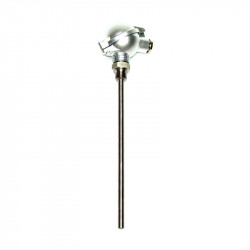
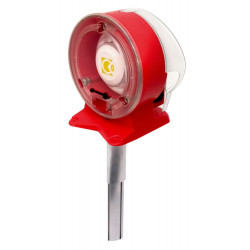
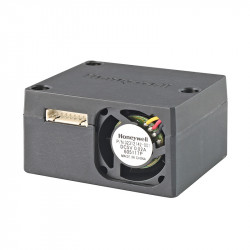
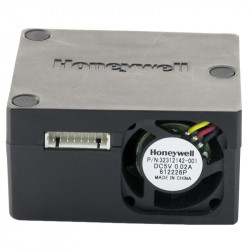
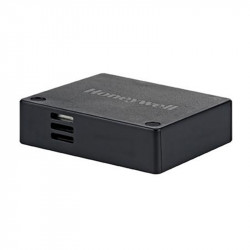
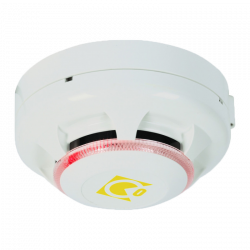
Leave a comment